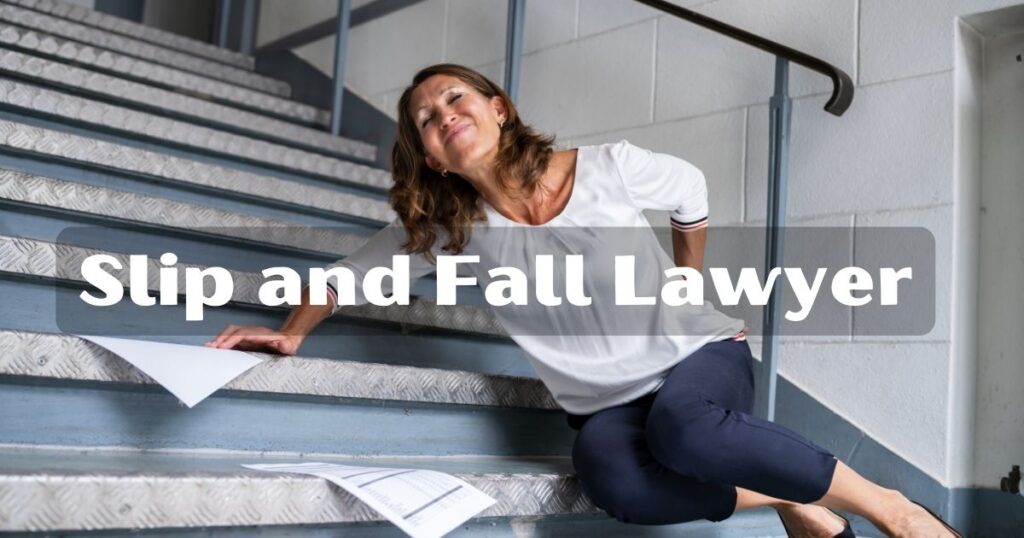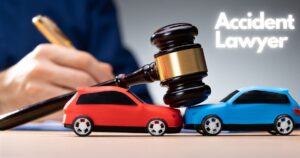A slip and fall accident can turn a routine day into a painful experience, often leading to injuries that require medical attention and can impact your daily life. Knowing your rights and understanding the legal recourse available is essential for seeking compensation and holding responsible parties accountable. This guide explores the intricacies of slip and fall claims, the legal processes involved, and why seeking professional legal help is crucial.
What is a slip-and-fall accident?
A slip and fall accident occurs when someone loses their footing due to hazardous conditions on someone else’s property. Common causes include wet floors, uneven surfaces, poor lighting, or obstacles in walkways. These accidents can result in a range of injuries, from minor bruises to severe fractures or head trauma.
Importance of seeking legal help
After a slip and fall incident, seeking legal assistance is vital for several reasons:
- Legal Expertise: Slip and fall lawyers specialize in premises liability and personal injury law. They understand the complexities of these cases and can navigate the legal system on your behalf.
- Maximizing Compensation: Lawyers assess your case to determine the full extent of damages, including medical expenses, lost wages, and pain and suffering. They negotiate with insurance companies or litigate in court to secure fair compensation.
- Navigating Complexities: Legal procedures can be intricate, with deadlines and legal standards that must be met. A lawyer ensures your rights are protected and guides you through each step of the claims process.
Understanding Slip and Fall Cases
Types of Slip and Fall Accidents
Slip and fall accidents can happen anywhere, but common scenarios include:
- Wet or slippery floors in supermarkets, restaurants, or public buildings.
- Uneven sidewalks or pavement due to cracks or potholes.
- Obstacles or debris in walkways that cause trips.
- Inadequate lighting in stairwells or parking lots.
Statistical overview of slip and fall accidents
According to the National Safety Council, slip and falls are a leading cause of unintentional injuries in the United States, accounting for millions of emergency room visits each year. These accidents affect people of all ages and can occur in various settings, from private residences to commercial properties.
Legal Basis for Slip and Fall Claims
Premises liability: who is responsible?
Property owners have a legal duty to maintain safe conditions for visitors. This duty applies to homeowners, businesses, landlords, and government entities responsible for public spaces. When they fail to uphold this duty and someone is injured as a result, they may be held liable for negligence.
Elements to prove in a slip and fall case
To succeed in a slip and fall claim, certain elements must be established:
- Duty of care: The property owner owed a duty to ensure the premises were safe for visitors.
- Breach of duty: They breached this duty by allowing a hazardous condition to exist.
- Causation: The hazardous condition directly caused the accident and resulting injuries.
- Damages: The victim suffered measurable damages, such as medical bills, lost wages, or emotional distress.
Steps to Take After a Slip and Fall Accident
Immediate Actions
- Seeking medical attention: Your health is the top priority. Seek medical help even if injuries seem minor, as some symptoms may appear later.
- Documenting the accident scene: If possible, take photos of the hazard, obtain witness contact information, and report the incident to the property owner or manager.
- Notifying the property owner: Inform the property owner or management about the accident to create a record of the incident.
Legal Process Overview
Consultation with a slip and fall lawyer
A consultation with a slip and fall lawyer allows you to discuss the details of your accident and injuries. This initial meeting helps the lawyer assess the strength of your case and explain your legal options.
Filing a claim or lawsuit
Your lawyer may file a claim with the property owner’s insurance company or initiate a lawsuit in civil court if a settlement cannot be reached. The legal team will handle all paperwork and communications, allowing you to focus on recovery.
Discovery phase: gathering evidence
During the discovery phase, evidence such as medical records, witness statements, and expert opinions is collected to support your claim. This evidence is crucial for proving liability and demonstrating the extent of your damages.
Factors Influencing Slip and Fall Cases
Role of Negligence
Negligence is central to slip and fall cases. It refers to the property owner’s failure to exercise reasonable care in maintaining safe conditions. Proving negligence involves showing that the owner knew or should have known about the hazard and failed to address it.
Comparative negligence in slip and fall cases
States vary in their application of comparative negligence laws, which determine how compensation is allocated if both the victim and property owner share fault. Some states reduce compensation based on the percentage of fault assigned to each party.
Establishing Liability
Importance of evidence in proving liability
Strong evidence, such as photos of the hazard, witness testimony, and expert reports, strengthens your case against the property owner. It establishes that the owner’s negligence directly caused your injuries.
Compensation in Slip and Fall Cases
Types of Damages
Compensation in slip and fall cases typically covers:
- Economic damages: Medical expenses, including hospital bills, medication costs, and future medical care. Lost wages and diminished earning capacity may also be included.
- Non-economic damages: Pain and suffering, emotional distress, loss of enjoyment of life, and mental anguish caused by the accident and injuries.
Calculating Compensation
The amount of compensation you receive depends on factors such as the severity of your injuries, necessary medical treatments, and the impact on your daily life. A slip and fall lawyer uses these factors to negotiate a fair settlement or argue your case in court for maximum compensation.
Settlement vs. trial outcomes
While most slip and fall cases settle out of court through negotiations, some cases may proceed to trial if a fair settlement cannot be reached. Trial outcomes may result in higher compensation awards but can also prolong the resolution process.
Benefits of Hiring a Slip and Fall Lawyer
Legal Expertise
Slip and fall lawyers specialize in personal injury law and have extensive experience handling similar cases. They understand the nuances of premises liability and know how to build a strong case on your behalf.
Experience in handling similar cases
Lawyers draw on their experience to anticipate defense strategies, negotiate with insurance companies, and advocate for your rights in court. Their knowledge of case law and legal procedures is invaluable during settlement negotiations and litigation.
Negotiation skills with insurance companies
Insurance companies often try to minimize payouts by disputing liability or downplaying the extent of injuries. A slip and fall lawyer counters these tactics, ensuring you receive fair compensation that reflects the true costs of your injuries and losses.
Maximizing Compensation
Strategies for maximizing settlement offers
Lawyers use proven strategies to maximize settlement offers, including gathering compelling evidence, consulting medical experts, and demonstrating the impact of injuries on your life. They negotiate from a position of strength to achieve the best possible outcome for you.
Litigation advantages with legal representation
If your case goes to trial, having a skilled slip and fall lawyer by your side is crucial. They present your case persuasively to a judge and jury, using evidence and witness testimony to establish liability and justify the compensation you deserve.
Common Defenses Against Slip and Fall Claims
Comparative Fault
Property owners may argue that your own actions contributed to the accident, reducing their liability. This defense is known as comparative fault and can affect the amount of compensation you receive based on the percentage of fault assigned to each party.
Defenses used by property owners
Defendants may claim they were unaware of the hazard or took reasonable steps to address it. They may also challenge the severity of your injuries or the need for specific medical treatments.
Overcoming comparative fault arguments
Your lawyer counters comparative fault arguments by demonstrating that the property owner’s negligence was the primary cause of the accident. This may involve proving that the hazard existed for a significant period or that warning signs were inadequate.
Assumption of Risk
In some cases, property owners argue that you willingly encountered a known hazard, assuming the risk of injury. This defense may apply if you engaged in risky behavior or disregarded warning signs.
Limitations of assumption of risk defense
However, assumption of risk defenses have limitations. They may not apply if the hazard was unreasonably dangerous or if you had no reasonable alternative to encountering the hazard.
Statute of Limitations for Slip and Fall Claims
Understanding the timeframe to file a claim
Each state sets a statute of limitations, which is the deadline for filing a slip and fall claim. This timeframe typically ranges from one to six years from the date of the accident or discovery of injuries.
Exceptions to statute of limitations
Certain circumstances may extend the statute of limitations, such as delayed discovery of injuries or claims involving minors. It’s important to consult with a slip and fall lawyer promptly to ensure your claim is filed within the applicable deadline.
Conclusion
Navigating a slip and fall claim can be complex, but with the right legal guidance, you can protect your rights and pursue fair compensation for your injuries and losses. By understanding the legal principles involved, documenting the accident, and consulting a knowledgeable slip and fall lawyer, you can take proactive steps toward achieving a favorable outcome.
Steps to take for pursuing compensation
- Act promptly: Report the accident, seek medical attention, and consult a slip and fall lawyer as soon as possible.
- Document thoroughly: Preserve evidence, including photos of the hazard and witness statements.
- Legal consultation: Schedule a consultation with a slip and fall lawyer to discuss your case and explore your legal options.






